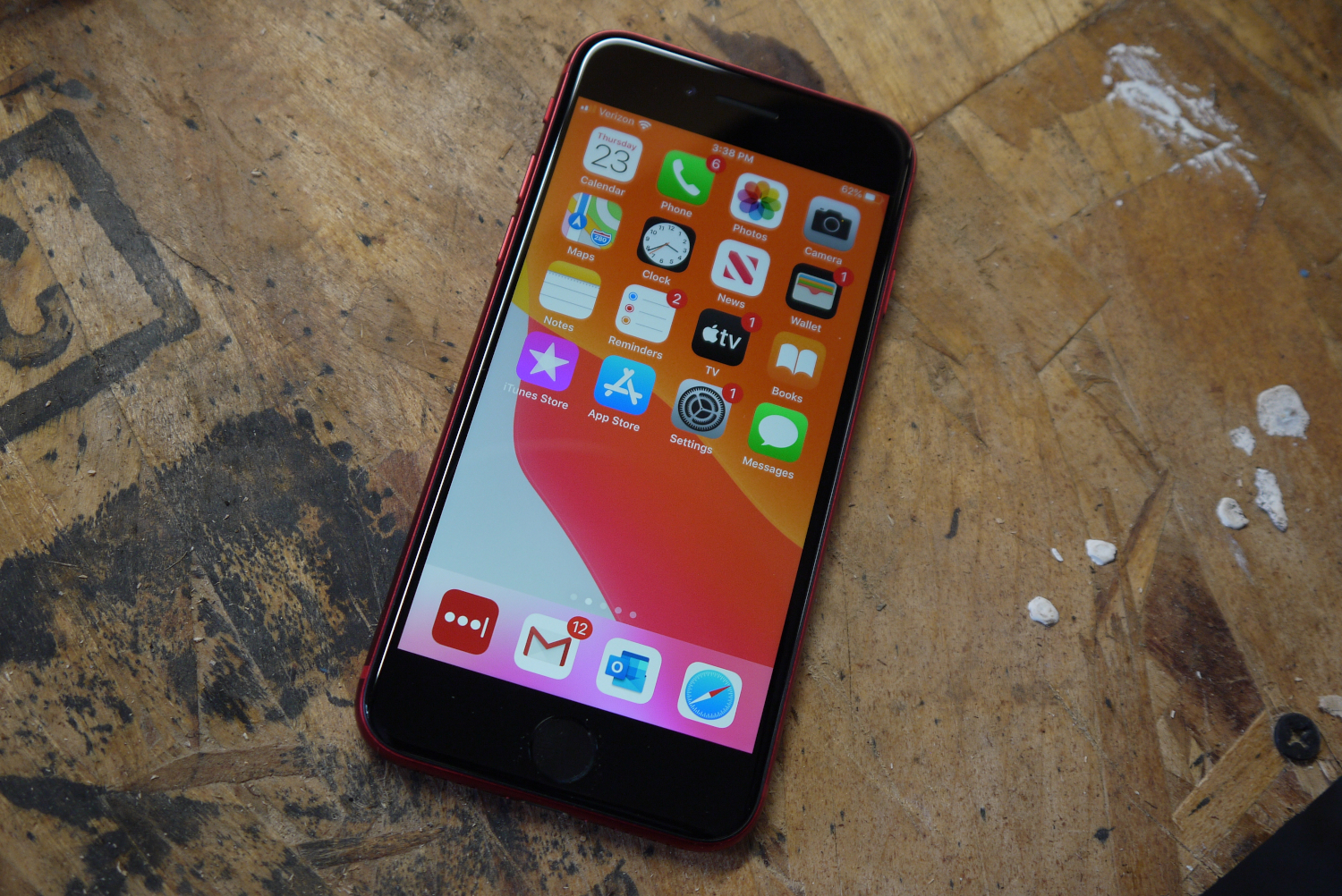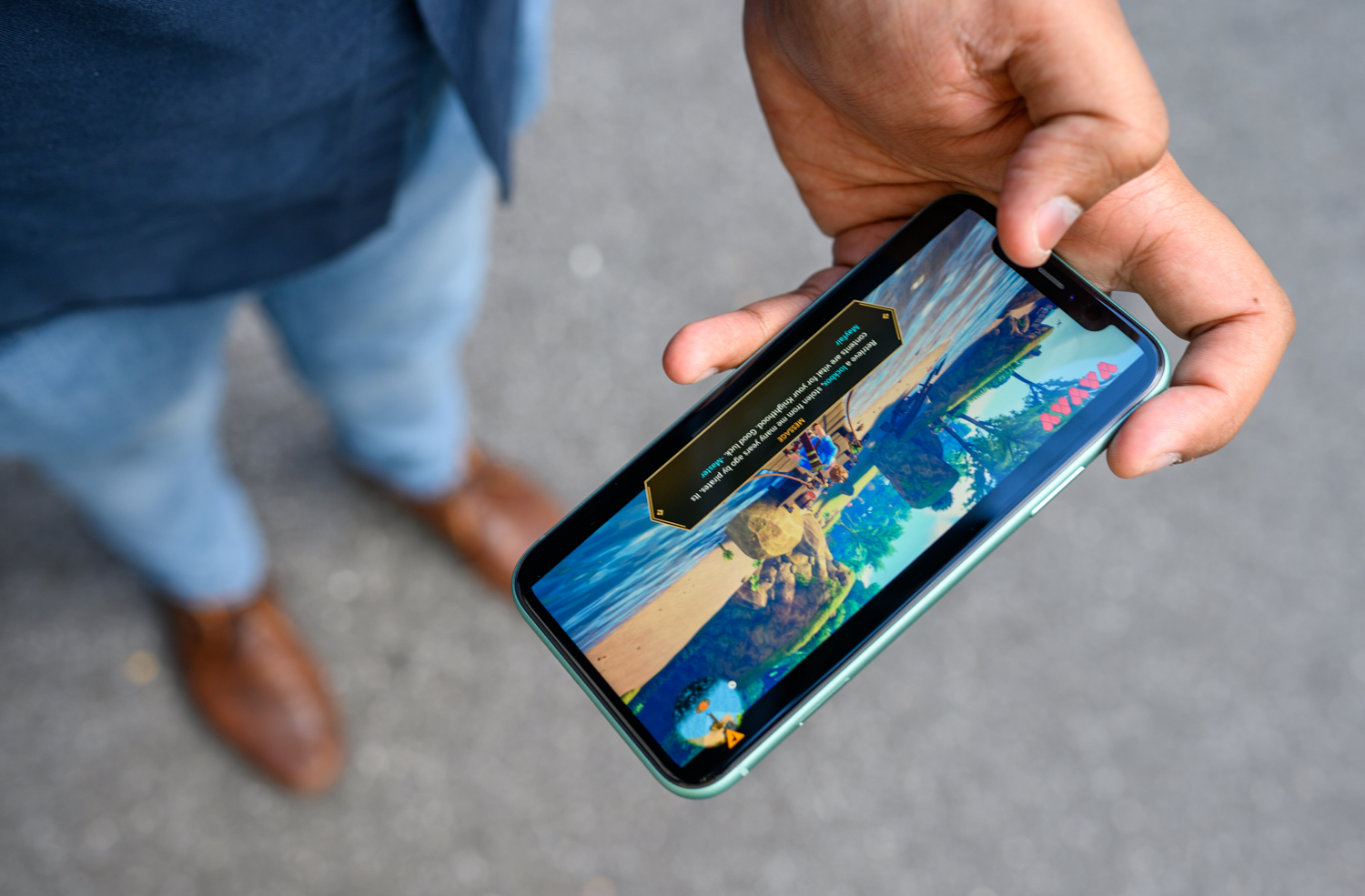With rumors flying that Apple might delay its next-gen iPhone, and recent issues threatening to put a significant damper on $1,000+ smartphone sales, it might come as no surprise that Apple dug deep into its existing hardware vault and cobbled together a beefed-up iPhone 8 — er — we mean iPhone SE.
Apple has taken one of its most popular hardware iterations to date and juiced it up with the A13 processor while keeping it at a reasonably low price point. While the SE is the new toy on the block, how does it stack up against Apple’s other flagship phone, the iPhone 11? We took a look at the two devices side by side to see which new iPhone comes out on top.
Specs
| iPhone SE (2020) | iPhone 11 | |
| Size | 138.4 x 67.3 x 7.3mm (5.45 x 2.65 x 0.29 inches) | 150.9 x 75.7 x 8.3mm (5.94 x 2.98 x 0.33 inches) |
| Weight | 148 grams (5.22 ounces) | 194 grams (6.84 ounces) |
| Screen size | 4.7-inch Retina IPS LCD | 6.1-inch Liquid Retina LCD |
| Screen resolution | 1,334 x 750 pixels (326 pixels per inch) | 1,792 x 828 pixels (326 pixels per inch) |
| Operating system | iOS 13 | iOS 13 |
| Storage | 64GB, 128GB, 256GB | 64GB, 128GB, 256GB |
| MicroSD card slot | No | No |
| Tap-to-pay services | Apple Pay | Apple Pay |
| Processor | Apple A13 Bionic | Apple A13 Bionic |
| RAM | 3GB | 4GB |
| Camera | Single 12MP rear, 7MP front | Dual lens 12-megapixel and 12MP wide-angle rear, 12MP TrueDepth front |
| Video | 4K at 60 frames per second, 1080p at 240 fps | 4K at up 60 frames-per-second, 1080p at 240 fps |
| Bluetooth version | Bluetooth 5.0 | Bluetooth 5.0 |
| Ports | Lightning | Lightning connector |
| Fingerprint sensor | Yes, front-mounted | No, FaceID instead |
| Water resistance | IP67 | IP68 |
| Battery | 1,821mAh
18W fast-charging (18W charger sold separately) Qi wireless charging |
3,100mAh
Fast charging (18W charger sold separately) Qi wireless charging |
| App marketplace | Apple App Store | Apple App Store |
| Network Support | AT&T, T-Mobile, Sprint, Verizon | T-Mobile, AT&T, Verizon, Sprint |
| Colors | Black, white, red | Purple, white, yellow, green, black, red |
| Prices | $399+ | $699+ |
| Review score | 4 out of 5 stars | 4 out of 5 stars |
Design, display, and durability

Thanks to our friends over at iFixit, we know that the iPhone SE uses the exact same cameras, SIM tray, Taptic Engine, and entire display assembly as Apple’s 2017 iPhone 8. The chassis and frame are visually identical to the iPhone 8, and the LCD display and size are an equally identical throwback. The smaller footprint of the iPhone SE will make you nostalgic for a time when your thumb could reach every corner of your screen with ease, regardless of how tiny your hands are. The iPhone 11 design should be familiar to any owners of Apple’s iPhone X or XS series. It features the same rounded corners, bezel, 6.1″ screen, and glass back.
The iPhone SE is rated marginally lower on dust and water resistance than its more expensive big brother, but we feel this shouldn’t be a deterrent to most buyers, unless you happen to work or play under particularly dusty or wet conditions — though it does mean you’ll have to be more careful with it near the pool. Outside of water resistance, durability for the two phones should be much the same, as both phones sport glass bodies and aluminum frames.
The iPhone 11 is the only 11-series phone that sports an LCD screen instead of the far more advanced and higher resolution OLED screen of the 11 Pro and 11 Pro Max. This is one of the primary factors in keeping the price point low. The iPhone SE also has an LCD screen as it keeps the same display assembly from the iPhone 8. While the iPhone 11 has a larger display, it looks about the same under most circumstances, with an identical pixels-per-inch measurement.
This is a closer match than you might expect, with the iPhone SE holding its own against the much more expensive iPhone 11. However, the iPhone 11 is clearly the more beautiful of the two phones.
Winner: iPhone 11
Performance, battery life, and charging

Both the new iPhone SE and the iPhone 11 feature the same A13 Bionic processor and similar amounts of RAM. It’s safe to say that performance in a day-to-day sense is equal across the two devices, and neither should have any issues running the latest 3D games or apps.
Battery life serves as a stark difference between these two devices. It should come as no surprise that the iPhone SE with its smaller body size should have almost 40% fewer hours of audio playback time and almost 25% fewer hours of video playback time, and that translates into real-world use, with the iPhone 11 offering a day and more of solid battery life. Both devices offer fast charging up to 18W, as well as wireless charging — but if you want that faster wired charging, you’ll need to fork out for a fast charger, as one isn’t included in the box.
Performance is mostly even between these two, but the big difference in battery size is one you’ll absolutely feel.
Winner: iPhone 11
Cameras

As we pointed out already, Apple has chosen to reuse some iPhone 8 hardware in the new iPhone SE, including the old camera assembly. From a hardware perspective, the camera is identical to its 2017 origin iPhone, but in a testament to how far Apple’s imaging software and rendering has come since then, we find the camera experience to be far better than it was on the iPhone 8.
With that being said, hardware does still matter, and the iPhone 11 comes with dual 12-megapixel ultra-wide and wide-angle camera lenses as opposed to the iPhone SE’s single 12-megapixel wide-angle camera. While it falls short of the iPhone 11 Pro, the iPhone 11’s additional lens gives it extra versatility the iPhone SE can’t match.
While the iPhone SE has made great improvements to its camera experience thanks to iOS 13, the iPhone 11 camera is a clear winner on sheer versatility.
Winner: iPhone 11
Software and updates

Like all current-generation iPhones, the iPhone SE and iPhone 11 run the same version of iOS and function identically where updates are concerned. iOS 13 has been one of the best so far, and auto-updates make keeping your OS up to date as simple as charging your iPhone at night and waking up to an updated phone in the morning. Both of these phones are likely to receive updates on the same day, and judging by Apple’s past record, will do so for a long time to come.
Winner: Tie
Special features

The iPhone SE is mostly a redux of the iPhone 8, and aside from an upgraded processor and iOS 13, it doesn’t really bring more to the table than the rest of the current lineup. However, we feel compelled to say that it’s actually its price that stands out as a special feature. Apple hasn’t released a phone starting at $399 in four years, and in fact it was the 2016 iPhone SE that launched at that price point. With the 2020 iPhone SE, Apple is acknowledging the demand for a cheaper device when many consumers may be in need of a new, modern device, but unable to justify or risk a $1,000+ price tag.
The iPhone 11 is a fantastic device, and its Night mode camera feature as well as support for surround sound with dual speakers place it firmly in competition with the best smartphones on the market. It also does its best to stand out with its array of bright colors and impressive battery life — but it’s the Animojis and Memojis powered by the Face ID feature that give it the edge over the iPhone SE. So many of Apple’s current special features are powered by the TrueDepth Face ID selfie camera, and without it, the iPhone SE is at a disadvantage.
Winner: iPhone 11
Price and availability
Both the iPhone SE and iPhone 11 are available unlocked directly from Apple as well as widely available from every major carrier. The iPhone SE starts at just $399 while the iPhone 11 kicks off at $699.
Overall winner: iPhone 11
The iPhone SE (2020) offers everything you could ever want from a modern smartphone at an unbeatable price. It scratches the itch of nostalgia at a time when fond memories and hopes of bright futures drive our day-to-day. But even with that in mind, it’s clear the iPhone 11 is the stronger phone. It has a more attractive and modern design, a more powerful camera, and some stronger special features.
However, those benefits are relatively small compared to the massive price gulf between the two phones, and with that in mind, it’s worth asking whether $300 is worth an additional camera lens, a bigger battery, and a prettier design. Sure, the iPhone 11 is the prettier and more modern of the two, but we’d be lying if we didn’t say the iPhone SE has a strong nostalgic appeal. The iPhone 11 is the phone to buy if money is no object — but if you don’t mind losing the sleek design and more powerful camera, save $300 and go for the iPhone SE (2020).



